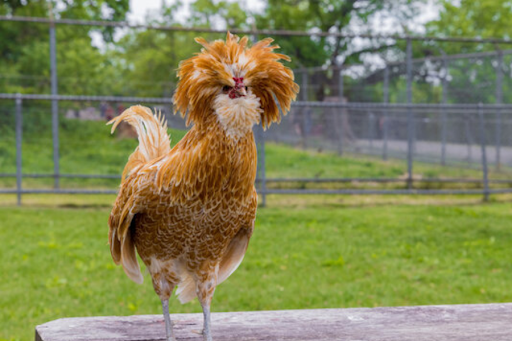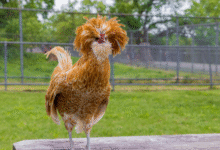Padovana Chicken Care: A Complete Guide to This Elegant Breed

Greetings from the fascinating world of the Padovana chicken, a breed that wins people over with its majestic beauty and inquisitive nature. Revered for centuries and originating from Italy, these ornamental birds are more than just eye candy—they are hardy, friendly, and functional members of any backyard or small farm flock. Whether you are a seasoned poultry keeper or new to chicken raising, this guide offers everything you need to know to successfully care for Padovana chickens, from housing and health to temperament and breeding.
The Fascinating Origins and Distinctive Appearance of the Padovana Chicken
The Padovana chicken traces its roots to the Veneto region of northeastern Italy, where it was once treasured by aristocrats and noble families. These chickens were often seen wandering the lush gardens of palatial estates, admired for their unique appearance and gentle disposition. They gained recognition over time for both their moderate egg-laying capabilities and their ornamental appeal.
Visually, the Padovana chicken stands out with its upright stature, slender frame, and striking V-shaped comb. However, the hallmark of this breed is its impressive crest—a puff of feathers atop the head that gives it a proud, almost whimsical appearance. Their plumage comes in an array of colors, from pure white to glossy black, rich blue, and even golden hues. These color variations only add to the bird’s visual allure and make each Padovana chicken a work of living art.
Understanding the Temperament and Behavior of Padovana Chickens
Despite their aristocratic appearance, Padovana chickens are not aloof. They are gentle, curious, and often quite affectionate with their keepers. Their naturally calm demeanor makes them ideal for flocks with other peaceful breeds, and they generally get along well in a mixed setting.
These birds are active foragers and enjoy exploring their environment. They like to peck at the ground, scratch through bedding, and playfully chase insects. This curiosity means they thrive in environments that allow free-range or semi-free-range living, where they can indulge their need for exploration. While they’re social, they also appreciate personal space and may prefer foraging solo or in small groups.
It is advised to treat children gently and consistently from an early age in order to build trust and a stronger bond. Doing so ensures they remain friendly, manageable, and less prone to stress as they grow.
Ideal Housing Conditions for Padovana Chickens
The right housing setup is essential for keeping your Padovana chicken happy and healthy. Since these birds are particularly susceptible to drafts due to their feathered crests, you’ll need a well-insulated yet ventilated coop that protects them from cold winds while preventing moisture buildup.
Make sure the coop includes enough elevated roosting bars—Padovanas love to perch off the ground at night. Provide at least 8–10 inches of perch space per bird, and line the floor with dry, absorbent bedding such as pine shavings or straw, which should be cleaned regularly.
Because of their active disposition, these chickens need outdoor access during the day. A secure run with grass, sand, or soil will keep them stimulated. Integrating natural features like small logs or low perches will further enrich their environment.
Feeding Your Padovana Chicken: Diet and Nutrition
Nutrition is key to maintaining the health, vitality, and egg production of your Padovana chicken. Start with a high-quality commercial layer feed that includes essential nutrients like calcium, protein, and vitamins. To boost their diet, offer them a variety of fresh fruits and vegetables such as leafy greens, carrots, cucumbers, and apples (avoid seeds).
Grains like cracked corn or wheat can be added as scratch grains for additional calories in cold weather. Since these chickens are avid foragers, letting them roam in a yard where they can pick at bugs and seeds can supplement their diet naturally.
Ensure fresh, clean water is always available.To avoid freezing in the winter, think about using heated waterers. You can also include grit and oyster shells in separate containers—grit aids in digestion, and oyster shells promote strong eggshells.
Maintaining Padovana Chicken Health and Preventing Illness
Padovana chickens, while elegant and seemingly delicate, are quite hardy when provided proper care. However, like all poultry, they are susceptible to certain health issues, especially related to their prominent feather crests and confined housing.
Common Issues and Prevention:
- Respiratory infections: Ensure the coop is well-ventilated but draft-free. High humidity and ammonia buildup from droppings can cause breathing problems.
- Mites and lice: Their fluffy head feathers can harbor parasites. Regularly inspect the crest and apply diatomaceous earth or poultry-safe treatments if needed.
- Eye infections: The feathers around their eyes can obscure vision and trap moisture. If needed, lightly trim crests to reduce the risk of irritation or infection.
Routine health checks, a clean coop, and a balanced diet are your best defenses. Additionally, schedule periodic vet checkups and consider vaccinations if recommended in your area.
Breeding Padovana Chickens and Raising Chicks
Breeding Padovana chickens can be a delightful endeavor, especially for those passionate about preserving rare breeds. Select breeding stock with desirable traits such as vibrant plumage, healthy crests, and good overall conformation.
Ensure your breeding coop has comfortable nesting boxes lined with soft bedding. Collect fertilized eggs regularly and use either a broody hen or an incubator for hatching. Padovana hens can go broody but aren’t always the most reliable mothers due to their crest obscuring vision.
Once chicks hatch, keep them in a warm brooder at 95°F (35°C), decreasing the temperature weekly. Waterers should be kept shallow to avoid drowning and chick starter feed should be high in protein.
Gradually introduce them to outdoor life as they feather out, ensuring protection from predators and harsh weather. With proper care, these chicks will grow into graceful adult birds, each adding beauty and character to your flock.
What Makes Padovana Chickens Truly Unique
It’s easy to see why so many poultry enthusiasts fall in love with the Padovana chicken. Their stunning crests alone make them stand apart, but their appeal runs much deeper. These birds are known for:
- Rose or V-shaped combs that complement their fluffy head feathers.
- A calm, curious nature that makes them easy to manage and interact with.
- Adaptability to both warm and cold climates when properly housed.
- Active foraging habits that keep them entertained and healthy.
- Egg-laying ability, producing a moderate number of white, medium-sized eggs annually.
Whether admired in a garden setting or appreciated as part of a productive backyard flock, the Padovana chicken brings charm, elegance, and functionality in equal measure.
Why Choose Padovana Chickens for Your Backyard or Farm
Adding Padovana chickens to your coop is like adding living art to your landscape. These birds aren’t just visually striking—they’re also a delight to keep. Their unique personalities, adaptability to diverse environments, and moderate maintenance requirements make them suitable for keepers of all experience levels.
For those who value aesthetics alongside practicality, the Padovana chicken offers the best of both worlds. With a bit of care, you’ll be rewarded with stunning birds that not only brighten up your backyard but also provide fresh eggs and endless entertainment.
So whether you’re starting your poultry journey or expanding an existing flock, the Padovana chicken deserves a spot in your coop.
Frequently Asked Questions (FAQs) About Padovana Chickens
Q1: Are Padovana chickens good egg layers?
Yes, Padovana chickens are moderate egg layers, producing around 150–180 white, medium-sized eggs per year.
Q2: Can Padovana chickens live in cold climates?
Absolutely. While they’re adaptable to various climates, their crests require protection from wet and freezing conditions to prevent frostbite or infections.
Q3: Do Padovana chickens get along with other breeds?
Yes, they are generally peaceful and can coexist well with other docile chicken breeds in a mixed flock.
Q4: How do I keep their crests clean and manageable?
Regular inspection and occasional trimming (if feathers block their vision or collect debris) help maintain cleanliness and avoid infections.
Q5: Are Padovana chickens noisy?
They are relatively quiet compared to some other breeds, though hens will still vocalize when laying eggs or feeling alarmed.
Q6: Can Padovana chickens be kept as pets?
Yes! Their friendly nature, manageable size, and charming looks make them excellent companions for families and hobbyists alike.
Stay in touch for more updates and alerts visit: Usa VyVyManga
